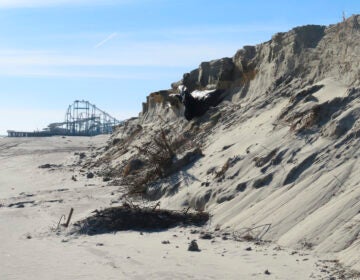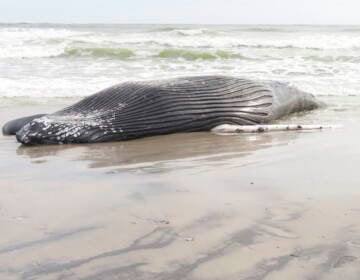N.J. beaches in better shape than before Sandy, researchers say

A Long Branch beach in August 2015. (Phil Gregory/WHYY)
New Jersey’s beaches are in better shape than they were before Superstorm Sandy thanks to sound public policy, government coordination, and strong partnerships, according to research released this week.
State and federal officials and university researchers with the Stockton University’s William J. Hughes Center for Public Policy and the Coastal Research Center met at the Galloway campus Wednesday to highlight the status of the state’s beaches.
David Rosenblatt, the New Jersey Department of Environmental Protection Assistant Commissioner for Engineering and Construction, says the beaches are in very good condition.
“The challenge now is to meet expectations for the future,” he said. “We will also be focused more on the back bay and how to address concerns there.”
University data estimates indicate that nearly 163 million cubic yards of sand has been pumped onto New Jersey’s beaches at a cost of $1.2 billion since the 1930s.
The U.S. Army Corps of Engineers Philadelphia District’s Keith Watson said crews have been working “non-stop” on beach and dune replenishment projects since Sandy.
“We have dredged, pumped or placed more than 40 million cubic yards of sand onto the beaches from Mantoloking to Cape May Point,” he said. “That’s enough sand to fill Lincoln Financial Field (in Philadelphia) approximately eight times.”
By the numbers
162,589,905: Cubic yards of sand that have been placed on New Jersey beaches. (Based on available data)
$1,239,668,278: The estimated cost of beach replenishment in New Jersey to date. All but about $53 million has been spent since Hurricane Gloria in 1985.
106: Number of beach locations that are surveyed twice a year as part of the New Jersey Beach Profile Network.
97: Miles of developed coastline in New Jersey.
30: Miles of natural shoreline remaining in New Jersey.
8.75: Percent of federal beach restoration project costs paid by local municipal governments.
65: Percent of federal beach restoration project costs paid by the federal government.
100: Percent of Hurricane Sandy-specific beach restoration paid by the federal government following passage of the Sandy Recovery Improvement Act on Jan. 29, 2013.
$20.6 billion: Amount generated by tourism in the four shore counties (Atlantic, Cape May, Ocean and Monmouth) in 2017, 48 percent of the total $43 billion spent.
WHYY is your source for fact-based, in-depth journalism and information. As a nonprofit organization, we rely on financial support from readers like you. Please give today.




